.gif)


EID Journal Home > Volume 15, Number 10–October 2009
Volume 15, Number 10–October 2009
Letter
Nontuberculous Mycobacteria Infection and Tumor Necrosis Factor-α Antagonists
Reinout M. Swart, Jakko van Ingen, Dick van Soolingen, Rob Slingerland, Willem D.H. Hendriks, and Jan G. den Hollander
Author affililiations: Maasstad Ziekenhuis Rotterdam, Rotterdam, the Netherlands (R.M. Swart, R. Slingerland, W.D.H. Hendriks, J.G. den Hollander); and National Institute for Public Health and the Environment, Bilthoven, the Netherlands (J. van Ingen, D. van Soolingen)
Suggested citation for this article
To the Editor: Mycobacterium haemophilum is an aerobic, slow-growing microorganism with optimal growth at 30°C to 32°C. It has a unique requirement for ferric iron–containing compounds (1), from which it acquired its name (i.e., haemophilum). Infections with M. haemophilum are rare, but cervicofacial lymphadenitis caused by M. haemophilum has been described in children (2). Besides cervicofacial lymphadenitis, extrapulmonary signs of M. haemophilum disease include subcutaneous noduli, arthritis, and osteomyelitis, which generally affect immunocompromised patients (3). Recently, 2 cases of cutaneous M. haemophilum infections after alemtuzumab treatment were reported (4). A small number of pulmonary M. haemophilum infections associated with AIDS or solid organ or bone marrow transplantation have been described (1). We report pulmonary M. haemophilum infection in a woman who had been immunosuppressed by tumor necrosis factor-α antagonist (TNF-αA) (adalimumab) treatment for rheumatoid arthritis.
A 72-year-old woman with a history of rheumatoid arthritis and obstructive sleep apnea syndrome had signs and symptoms of fatigue, mild fever episodes, and a nonproductive cough 9 months after treatment for rheumatoid arthritis had begun with methotrexate (MTX) and TNF-αA. Physical examination was unremarkable except for a body temperature of 38.9°C. Laboratory testing showed an increased erythrocyte sedimentation rate (ESR) (77 mm/h), an increased C-reactive protein (CRP) level (60 mg/L), a normal leukocyte count (8,500 cells/μL), and relative monocytosis (12%). HIV serologic testing results were negative. Chest radiograph showed an infiltrate in the right upper lobe. Chest computed tomography confirmed this finding and showed lymphadenopathy in the right hilus and mediastinum.
Notably, the tuberculin skin test result was negative at screening before she began the TNF-αA treatment, but was now positive (20 mm), suggesting mycobacterial infection. Auramine and Ziehl-Neelsen staining of sputum and bronchoalveolar liquids showed no acid-fast bacilli, and M. tuberculosis infection was not confirmed by PCR or culture. Eventually, a mediastinal lymph node biopsy was taken by endoscopic ultrasound guidance. Granulomatous inflammation and acid-fast bacilli were seen by microscopy. Corresponding cultures yielded a strain identified as M. haemophilum at the Netherlands National Institute for Public Health and the Environment (RIVM) by using the Inno-LiPA Mycobacteria v2 reverse line blot assay (Innogenetics, Ghent, Belgium). Strain identity was confirmed by sequencing of the complete 16S rDNA gene, which was identical to that of M. haemophilum available in the GenBank sequence database (National Center for Biotechnology Information; www.ncbi.nlm.nih.gov; accession no. X88923).
The RIVM performed drug susceptibility testing by using a modified agar dilution method (5). Middlebrook 7H10 media were enriched with 10% sheep blood hemolyzed by 1:1 dilution with water and subsequent freezing–thawing. Historic drug susceptibility data was reviewed (Table). Initially, adalimumab was discontinued, and our patient was treated with isoniazid, ethambutol, rifampin, and pyrazinimide because M. tuberculosis infection was suspected. After identification of M. haemophilum, our patient was treated with rifampin and azithromycin. A total treatment duration of 10 months resulted in complete resolution of the pulmonary infiltrate and normalization of ESR and CRP concentration. During the follow- up period of >12 months, the patient remained asymptomatic. Her rheumatoid arthritis was treated with MTX monotherapy.
This case illustrates the risk for infectious diseases during TNF-αA treatment. Rheumatoid arthritis can be treated effectively with MTX and TNFαA (6). Side effects of concern are infectious diseases, which prompt the need for screening for latent mycobacterial infection before commencing treatment (7). Despite screening, mycobacterial infections have been diagnosed after prolonged treatment in various patients (8). This case shows that not only M. tuberculosis but also nontuberculous mycobacteria (NTM) should be considered as possible pathogens. This possibility is of clinical importance because of the diagnostic challenges. Diagnosing NTM infections may require specific culture media and molecular assays. Under optimal conditions, cultures show growth of most NTM species (including M. haemophilum) within 2–3 weeks. NTM are less susceptible to antimicrobial drugs than M. tuberculosis. M. haemophilum is generally resistant in vitro to isoniazid, ethambutol, and rifampicin (Table), but no standardized susceptibility methods for M. haemophilum exist. Therefore, following current guidelines from the American Thoracic Society (ATS) is advisable for NTM infections (9).
No specific recommendations exist for pulmonary M. haemophilum infections, but for disseminated M. haemophilum infections, the ATS recommends a multidrug regimen combining clarithromycin, rifampicin/rifabutin, and ciprofloxacin. Although no studies on treatment duration for M. haemophilum infections have been conducted, the ATS guidelines recommend treatment until cultures taken during therapy are negative for 1 year (9). Whether TNF-αA treatment can be continued during antimycobacterial treatment is a matter of debate in the absence of sufficient safety data (8). In active tuberculosis infection, treatment with TNF-αA is contraindicated before patients complete a standard regimen of antituberculosis therapy; no information is available for NTM disease (10).
This case is presented especially to demonstrate the diagnostic challenges of NTM infections. For such cases, clinicians are advised to consult experts in the field of NTM infections.
References
Saubolle MA, Kiehn TE, White MH, Rudinsky MF, Armstrong D. Mycobacterium haemophilum: microbiology and expanding clinical and geographic spectra of disease in humans. Clin Microbiol Rev. 1996;9:435–47.
Lindeboom JA, Prins JM, Bruijnesteijn van Coppenraet ES, Lindeboom R, Kuijper EJ. Cervicofacial lymphadenitis in children caused by Mycobacterium haemophilum. Clin Infect Dis. 2005;41:1569–75. PubMed DOI
Shah MK, Sebti A, Kiehn TE, Massarella SA, Sepkowitz KA. Mycobacterium haemophilum in immunocompromised patients. Clin Infect Dis. 2001;33:330–7. PubMed DOI
Kamboj M, Louie E, Kiehn T, Papanicolaou G, Glickman M, Sepkowitz K. Mycobacterium haemophilum infection after alemtuzumab treatment. Emerg Infect Dis. 2008;14:1821–3. PubMed DOI
van Klingeren B, Dessens-Kroon M, van der Laan T, Kremer K, van Soolingen D. Drug susceptibility testing of Mycobacterium tuberculosis complex by use of a high-throughput, reproducible, absolute concentration method. J Clin Microbiol. 2007;45:2662–8. PubMed DOI
Weinblatt ME, Keystone EC, Furst DE, Moreland LW, Weisman MH, Birbara CA, et al. Adalimumab, a fully human anti-tumor necrosis factor alpha monoclonal antibody, for the treatment of rheumatoid arthritis in patients taking concomitant methotrexate: the ARMADA trial. Arthritis Rheum. 2003;48:35–45. PubMed DOI
British Thoracic Society Standards of Care Committee. BTS recommendations for assessing risk and for managing Mycobacterium tuberculosis infection and disease in patients due to start anti-TNF-alpha treatment. Thorax. 2005;60:800–5. PubMed DOI
van Ingen J, Boeree MJ, Dekhuijzen PN, van Soolingen D. Mycobacterial disease in patients with rheumatic disease. Nat Clin Pract Rheumatol. 2008;4:649–56. PubMed DOI
Griffith DE, Aksamit T, Brown-Elliot BA, Catanzaro A, Daley C, Gordin F, et al. An official ATS/IDSA statement: diagnosis, treatment, and prevention of nontuberculous mycobacterial diseases. Am J Respir Crit Care Med. 2007;175:367–416. PubMed DOI
Saag KG, Teng GG, Patkar NM, Anuntiyo J, Finney C, Curtis JR, et al. American College of Rheumatology 2008 recommendations for the use of nonbiologic and biologic disease-modifying antirheumatic drugs in rheumatoid arthritis. Arthritis Rheum. 2008;59:762–84. PubMed DOI
Table
Table. Antimicrobial drug susceptibility test results for Mycobacterium haemophilum isolate from rheumatoid arthritis patient and other M. haemophilum isolates
Suggested Citation for this Article
Swart RM, van Ingen J, van Soolingen D, Slingerland R, Hendriks WDH, den Hollander JG. Nontuberculous mycobacteria infection and tumor necrosis factor-α antagonists. Emerg Infect Dis [letter]. 2009 Oct [date cited]. Available from http://www.cdc.gov/EID/content/15/10/1700.htm
DOI: 10.3201/eid1510.090110
abrir aquí para acceder al documento CDC original:
Nontuberculous Mycobacteria Infection and Tumor Necrosis Factor-α Antagonists | CDC EID





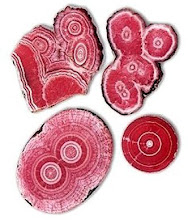
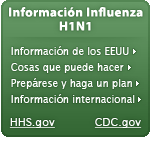

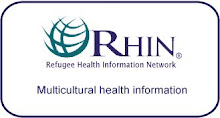




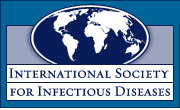




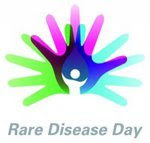



.png)











No hay comentarios:
Publicar un comentario